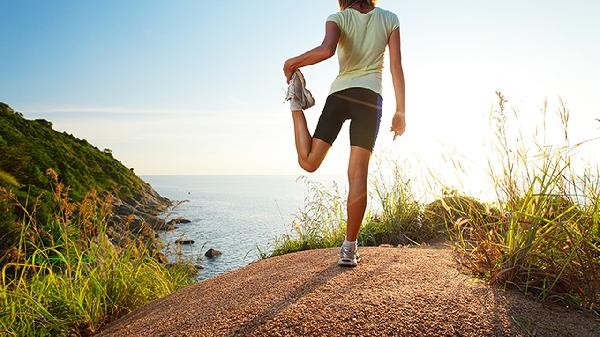Lower abdominal pain after intense running may be related to muscle spasms, gastrointestinal dysfunction, exercise-induced abdominal pain, urinary system irritation, or gynecological problems. Excessive contraction of abdominal muscles during running may lead to lactic acid accumulation and trigger spasms; Running on an empty or full stomach can easily stimulate abnormal gastrointestinal motility; Vibration of internal organs during movement may also cause transient ischemic pain. Women also need to consider special circumstances such as corpus luteum rupture.

1. Muscle spasm
Continuous contraction of rectus abdominis and oblique abdominis muscles during running may cause local lactate accumulation, manifested as sharp pain like cutting. This situation is more common in people with weak core strength or sudden increase in running volume, and the pain usually subsides within half an hour after stopping exercise. It is recommended to fully warm up the abdominal muscles before running, use dynamic stretching to activate the core muscle group, and pay attention to maintaining the correct running posture and avoiding hunchback during exercise.
2. Gastrointestinal dysfunction
Running immediately after a meal can cause the gastrointestinal mesentery to be stretched, while fasting exercise may trigger gastric acid stimulation. Common colic accompanied by nausea, with pain mostly concentrated in the periumbilical area. 1-2 hours before exercise, it is recommended to consume a moderate amount of easily digestible carbohydrates and avoid high fiber or high-fat diets. If persistent colic accompanied by diarrhea occurs, attention should be paid to exercise related gastrointestinal syndrome.
3. Sports induced abdominal pain [SEP], also known as sports induced lateral abdominal pain, is caused by diaphragm spasm or insufficient blood supply to internal organs. Pain often occurs in the ribs and worsens during breathing. It may be related to irregular breathing rhythm during running. It is recommended to use abdominal breathing method to maintain coordination between breathing frequency and step frequency. Special attention should be paid to keeping warm during winter sports, as cold stimulation can exacerbate blood vessel constriction.
4. Urinary system stimulation

Excessive bladder filling or renal pelvis shaking may cause lower abdominal pain, especially common in long-distance runners. Before exercise, the bladder should be emptied and 100-150 milliliters of electrolyte water should be replenished every hour. If pain radiates to the perineum or hematuria occurs, the possibility of kidney stone movement should be ruled out. In this case, immediate cessation of exercise and medical examination are required.
5. Gynecological factors
Female runners need to consider special circumstances such as luteal rupture during ovulation and endometriosis. The pain is mostly on both sides of the lower abdomen and may be accompanied by vaginal bleeding. It is recommended to avoid high-intensity training three days before menstruation and use sports specific sanitary tampons. When there is persistent dull pain for more than 2 hours or dizziness symptoms, emergency treatment such as ectopic pregnancy should be ruled out.
It is recommended to take measures such as hot compress on the abdomen and drinking warm honey water to relieve abdominal pain after running. Daily core muscle training such as plank support should be strengthened to gradually increase running distance and avoid sudden increases. Choose professional running shoes to reduce ground recoil and use abdominal straps for support during running. Record the correlation between pain characteristics and diet, menstrual cycle. If the pain occurs more than 3 times a week or lasts for more than 1 hour, gastrointestinal endoscopy or pelvic ultrasound examination should be performed. Pay attention to distinguishing between physiological pain and pathological pain, and avoid mistaking acute abdominal conditions such as appendicitis for normal reactions after exercise.







Comments (0)
Leave a Comment
No comments yet
Be the first to share your thoughts!